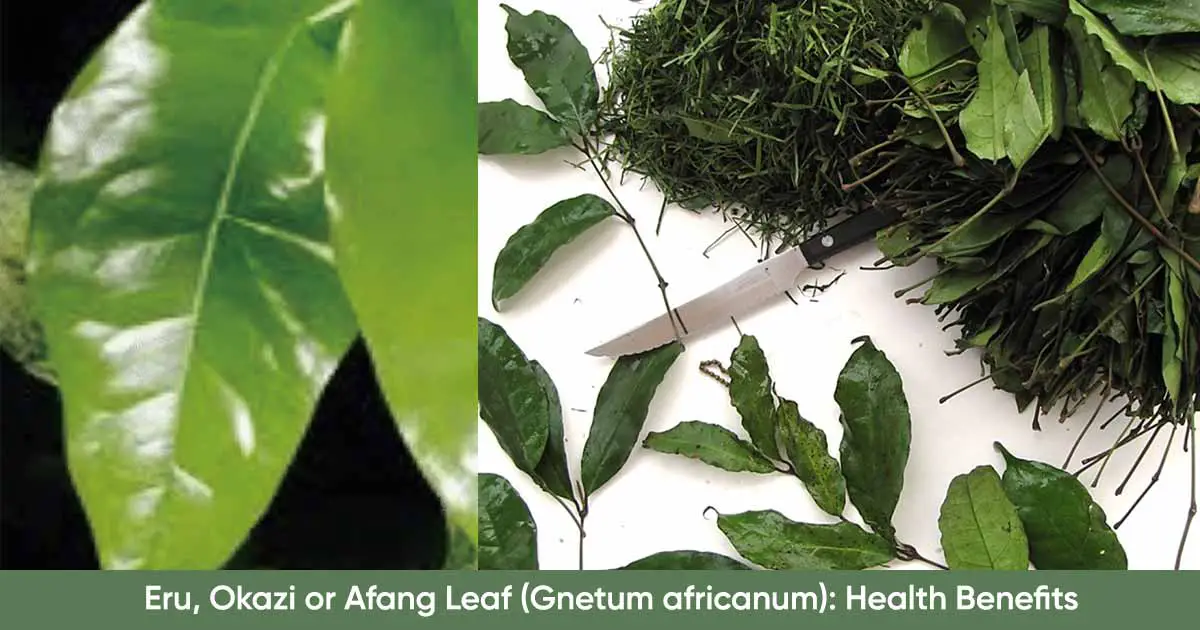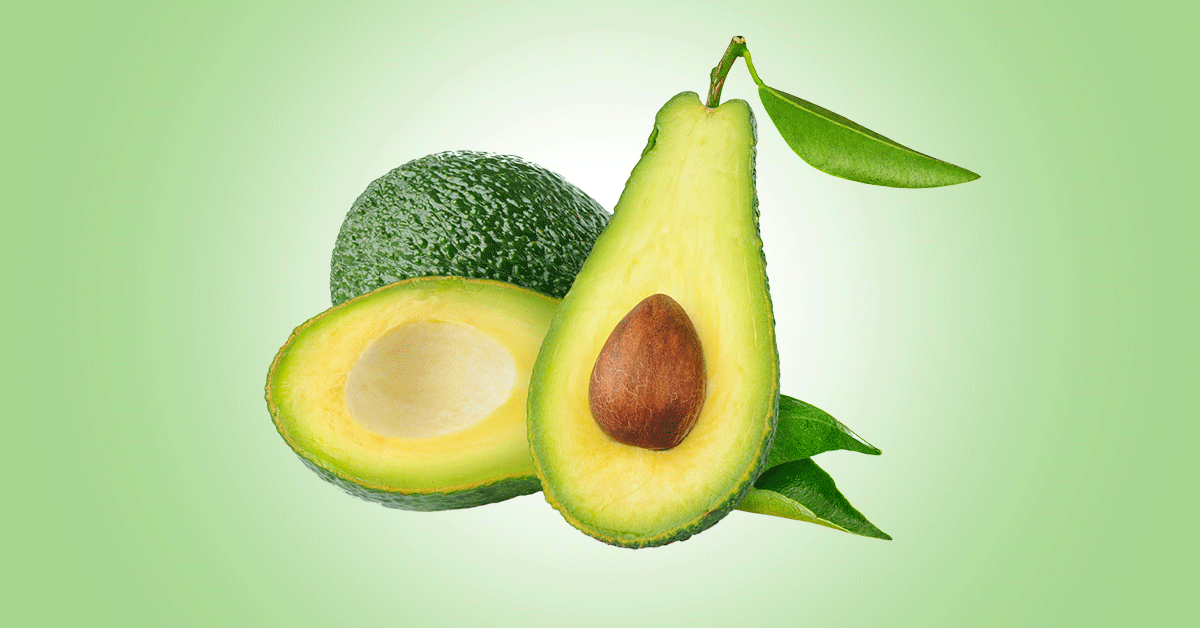Gnetum africanum, or Okazi, Eru, African jointfir is a climbing vine with highly nutritious leaves that are utilized as edible vegetable. The plant is native to tropical rainforest of West and Central Africa, found in mostly southeast Nigeria, West Cameroon, Gabon, Central Africa, and Angola. There are many Gnetum spp, but the most important species include Gnetum africanum and Gnetum bucholzianum.
The plant is an evergreen, perennial, plant that has a woody stem and can grow up to 12 m. It is from the Gnetum spp. and the Gnetaceae family.
Other local names of Gnetum africanum includes ‘wild spinach’ in English, okazi, ukase or afang (Nigeria), Eru, okok, m’fumbua, or fumbua (Cameroon), koko (Angola), m’fumbua or fumbua (DR Congo), and “Ntoumou” in Gabon.
Nutritionally, the leaf is a tasty vegetable with high nutritional content of protein, essential amino acids and mineral element. It can be consumed raw, or as condiment or finely shredded and added to soups. It can be dried in the sun after shredding and preserved. Since the leaf is tough, some mix it with waterleaf (Talinum triangulare).
In Cameroon, two dishes are made from the leaves, “Eru” (Anglophone Cameroon), and “Okok” (Francophone Cameroon) with condiments such as onions, palm oil, shrimps, groundnut, etc. Okazi soup is popular among the people of southeastern Nigeria, while Afang soup is popular in Akwa Ibom, and Cross Rivers states of Nigeria.
Gnetum africanum leaves are used traditionally to treat sore throat, cold, spleen enlargement, high blood pressure, piles, nausea, constipation, boils, warts, and the effect of alcohol intake. The stem is cut to produce tisane used during childbirth to ease pain.
Composition
Nutritional Content
Gnetum africanum contains more dry matter than other dark or medium green leaf vegetables. G. africanum contains dietary fiber (28–37%), protein (13–18%), fats (2–10%), carbohydrates (38–44%). The stem has more minerals and proteins than the leaves, though the leaves contain more fibers. It has low calories at 30–50 kcal/100 g.
The plant contains high protein and amino acids content. The amino acids include essential amino acids (isoleucine, leucine, lysine, methionine, phenylalanine, threonine, tryptophan, valine), and non-essential amino acids (aspartic acid, serine, glutamic acid, proline, glycine, alanine, cysteine, tyrosine, histidine, and arginine). Glutamic acid, leucine, and aspartic acid are more abundant while cysteine, ammonium, and histidine are low.
The vitamin C content in the leaf is as high as 113 mg per 100 g. Other vitamins include niacin, thiamine, riboflavin, tocopherols. G. africanum leaves contain high calcium, magnesium, phosphorus, potassium. The seeds also contain additional minerals like iron, copper, zinc, potassium, and phosphorus.
The fatty acids (myristic, stearic, oleic, palmitic, palmitoleic, arachidic, linoleic, linolenic, behenic, arachidic acids) are mostly unsaturated fatty acids and few saturated ones.
Phytochemicals
Gnetum africanum contains tannins, saponin, inulins, flavonoids, alkaloids, and glycosides
The yellow oil portion contains b-carotene, b-sitosterol, and phospholipids. Phenolic compounds such as flavones (Isoswertisin, Vicenin 2, 3), flavonostilbenes (Gnetuhainin A, Gnetoflavanol A, B, C, D), and trimeric stilbenes (Gneafricanin A, B, C, D, E, F, Gnetin C, D, E, F, Longusol A, vitamin E) have been isolated from the plant.
The essential oils contain b-caryophyllene, (E)-phytol, b-selinene, and (E)b-ionone, and traces of a-pinene, camphene, trans-b-damascenone, valencene, a-zingiberene, c-cadinene, 7-epi-a-selinene, and methyl palmitate. Phytol in the oil can be converted to vitamins E and K1.
Health Benefits of Gnetum africanum
The leaves of Gnetum africanum have hypolipidermic, hyperglycemic, anti-inflammatory, and antioxidant properties.
Antioxidant effect:
The plant leaf contains high levels of carotenoids (b-carotene), vitamin C, phenols, sterols (b-sitosterol). These compounds are natural antioxidants that prevent oxidative damage and also mop free radicals that cause damage and diseases to the body.
High fiber content:
Since the leaves contain high dietary fiber content, it could help to prevent constipation by improving bowel movement, and adding bulk to the stool. It could also prevent obesity, diabetes, colorectal cancers.
The younger leaves have short fiber that are easily digestible, while the older leaves have high level of crude long fiber that is less digestible. Older leaves have more laxative effect, and could also be more effective in preventing atherosclerosis. This is achieved through lowering of plasma cholesterol by bile acid binding and excretion.
Antimicrobial activity:
Edet et al. reported that the essential oil of G. africanum inhibit Escherichia coli, K. pneumoniae, E. cloacae, P. stuartii, and P. aeruginosa, E. aerogenes.
Weight loss:
Gnetum africanum has high dietary fiber and low calories. This makes it a good choice in managing and controlling of weight gain.
Anti-inflammatory effect:
Gnetum africanum contains compounds such as resveratrol glycosides, and other anti-infammatory compounds. The anti-inflammatory effect is through inhibition of LPS-induced TNF-a production in RAW cells. Hence, it could be useful in treating inflammatory conditions like rheumatoid arthritis.
Diabetes management:
Since the leaves contain dietary fiber, it decreases the absorption of cholesterol from the gut and delay the digestion and conversion of starch to simple sugars. This is a good step in the management of diabetes.
Anticholinesterase activity:
In a study by Ganiyu Oboh, et al., the leaves of African jointfir (Gnetum africanum) and editan (Lasianthera africana) contains alkaloids that exhibit anticholinesterase activities in manganese-induced toxicity in fruit fly (Drosophila melanogaster). It improved survival rate and locomotor function, antioxidant enzymes, hence it could be useful in managing neurodegeneration.
Gastroprotective effect:
In a study by Ugwu Sandra et al., the ethanolic leaf extracts of Gnetium africanium has cytoprotective effect against acetic acid induced gastric ulceration in wistar rats. This could be attributed to the antioxidant free radical scavenging or inhibition of prostaglandin synthesis.
Toxicity
Gnetium africanium is safe for consumption, even up to dose above 500 mg/kg. Though it has antinutrients like tannins, phytic acids, the level is low to cause any serious side effects.
References:
- https://tropical.theferns.info/viewtropical.php?id=Gnetum+africanum
- https://pfaf.org/User/Plant.aspx?LatinName=Gnetum+africanum
- https://www.cifor.org/publications/pdf_files/factsheet/Gnetum_eng.pdf
- https://academicjournals.org/article/article1379514273_Iloh%20et%20al.pdf
- https://www.researchgate.net/publication/51592522_Gnetum_africanum_A_Wild_Food_Plant_from_the_African_Forest_with_Many_Nutritional_and_Medicinal_Properties
- https://www.ncbi.nlm.nih.gov/pmc/articles/PMC4027339/
- https://onlinelibrary.wiley.com/doi/full/10.1002/fsn3.3307
- https://www.hindawi.com/journals/omcl/2018/8952646/
- https://www.longdom.org/open-access/gastroprotective-effect-of-emgnetum-africanumem-ethanolic-extract-on-acetic-acid-induced-peptic-ulcer-on-adult-wistar-rats-54523.html












